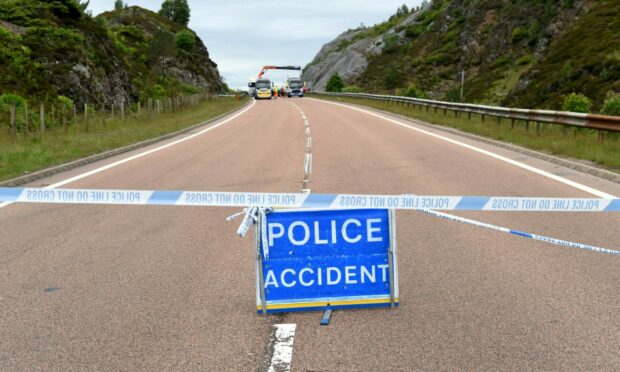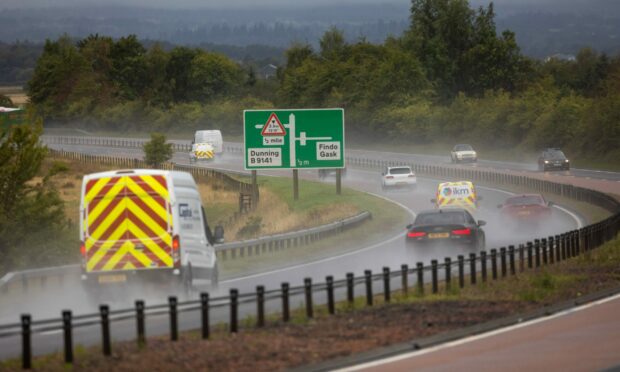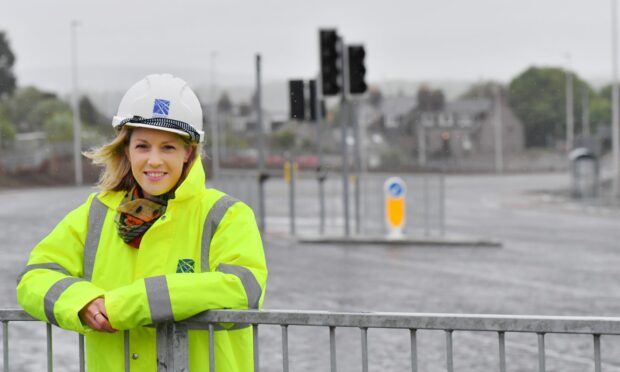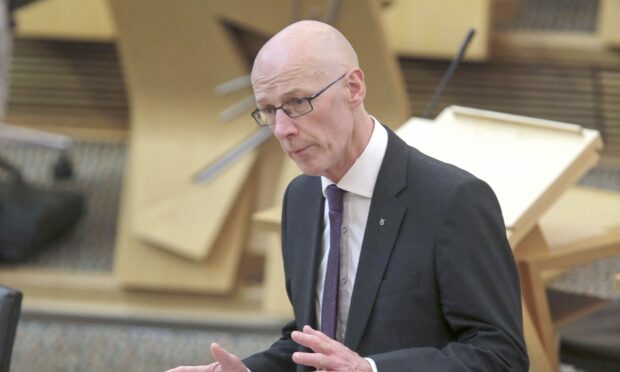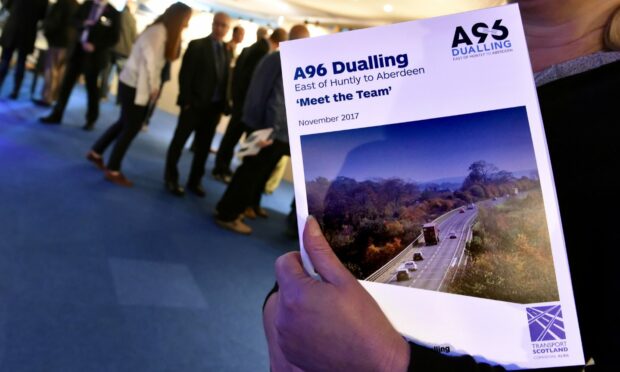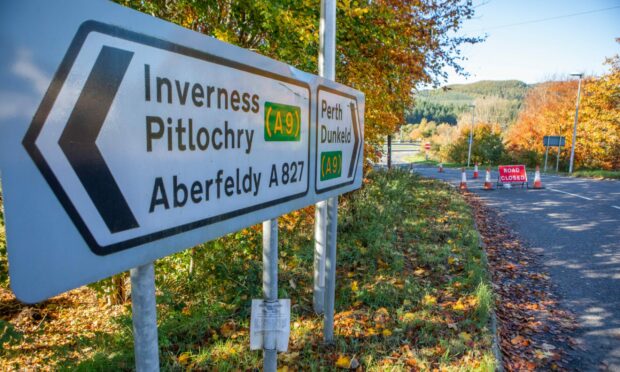SNP ministers are being inundated with demands to speed-up dualling of the A9 road in the wake of a spate of recent tragedies, we can reveal.
Worried motorists and residents have been flooding ministers with their concerns about the failure to deliver on promises to upgrade the key route.
Emails and letters about progress with the A9 and A96 were being sent to transport chiefs almost every day during some weeks in September and October.
Much of the correspondence – which has been released to us under freedom of information (FOI) laws – references recent tragedies on the routes.
The memos lay bare how “genuinely fearful” many have become when loved ones travel along the roads, and how some view the delays to upgrades as “utterly scandalous”.
Some of the correspondence was passed to transport ministers from senior SNP colleagues who have the roads in their constituencies – including Deputy First Minister John Swinney and Finance Secretary Kate Forbes.
There were 13 deaths on the A9 between Perth and Inverness last year, as well as multiple casualties on the A96 between Aberdeen and Inverness.
Seven lorries jack-knifed on the A9 in one night last week alone.
Those contacting ministers were almost all demanding the delivery of pledges to dual both routes, amid concerns that work has recently stalled on the two £3 billion schemes.
Former SNP minister Fergus Ewing said on Thursday he would “eat his hat” if the A9 was dualled by 2025, as targeted.
Tragedy
One Highland resident wrote to First Minister Nicola Sturgeon, Ms Forbes and Transport Minister Jenny Gilruth on the day a toddler and his grandparents died in a collision on the A9, near Slochd Summit, on July 5.
They wrote: “This is the first time that I have written to politicians, however I would like to voice my concern at the lack of investment in both the A9 and A96 and the broken promises with regards the dualling of both of these roads.”
The e-mail added: “There has been too much loss of life on this road and sadly. Until it is dualled along with the A96, sadly there will be further incidents such as this.”
In August, an Inverness resident contacted Ms Gilruth, saying: “I have never before worried about driving this road, however this year has changed that, and I am genuinely fearful whenever I need to travel south and also worry when family or friends do so.
“I urge the government not only to rediscover the impetus to upgrade the A9 but to do so at an increased pace to try and stop any further unnecessary deaths.”
Ms Gilruth received another email the day after two deaths in separate incidents on the A9 on September 16.
American Jacalyn Margittay died on the A9 near Dunkeld, while Philippa Grant from Rothiemurchus lost her life on the road near Slochd.
The correspondence read: “This road claims so many lives that the Scottish Government must NOT delay further the promised dualling upgrade.”
In the six months between June and November, ministers were receiving an average of more than one memo a week about the roads.
Mr Swinney – who represents Perthshire North – contacted transport ministers four times in the period to ask them to respond to constituents about progress on the A9.
Other SNP MSPs passing on concerns included Highland MSPs Ms Forbes, Maree Todd, the public health minister, and Emma Roddick.
Perthshire South and Kinross-shire MSP Jim Fairlie has also been in touch with ministers about his constituents’ concerns.
‘My heart is in my mouth’
In October, one contacted Mr Fairlie, saying: “My daughter lives in Inverness and every time she, and our four-year-old grandson, drives down to visit my heart is in my mouth until I know that they have completed their journey safely.
“I fear that unless the dualling programme is completed there will continue to be accidents/fatalities on this road and I would hope that as a member of the current government you would raise this matter with the transport minister.”
In the same month, a former SNP voter demanded answers from Ms Gilruth on the future of the A96.
“What exactly is the reason for the hold-up with this overdue project? It could almost have been finished by now, at a fraction of the cost,” they said.
Dualling delays
Work to dual the A9 between Inverness and Perth was originally scheduled for completion by 2025, but only two of the 13 sections have been finished to date.
Publication of a review into future funding arrangements for the project has been repeatedly delayed.
Meanwhile, a decision on the future of the A96 dualling programme was expected to be announced last year, but has also been pushed back.
In December, another frustrated motorist contacted Ms Gilruth about the A9.
“As a regular user of the A9 I continue to find it utterly scandalous that our Scottish Govt sit back doing very little with respect of the A9 dualling,” they said.
“I just hope and pray I’m not next victim as I drive this road every second week on business trips between Ayrshire and Inverness.”
Aberdeenshire East MSP Gillian Martin and Mr Ewing, the Inverness and Nairn MSP, have both sought recent meetings with Ms Gilruth about the future of the roads.
The released correspondence also shows Scottish Conservatives Douglas Ross and Liam Kerr have been contacting the government about the future of the roads, as have Labour’s Rhoda Grant, the leaders of Highland and Moray councils, and Moray Chamber of Commerce.
Safety improvements
Ms Gilruth announced in December that an additional £5m would be invested in road safety measures for the A9 between now and 2025.
The transport minister said: “My sympathies are with everyone who has lost a loved one on Scotland’s roads and specifically on the A9 in recent months.
“One life lost on Scotland’s roads is one too many and as a government it is imperative we respond the devastating increase in fatalities on the A9 in recent months.”
A Transport Scotland spokesman said the government agency undertakes an annual review of collisions on the trunk road network to identify cluster sites, or routes with recorded collisions that may be worthwhile of further investigation.
“The process, together with a detailed understanding of collision trends around the network, results in a prioritised programme of sites that will be investigated further,” he said.
“This evidence led approach ensures that resources can be targeted at locations where the greatest potential for casualty reduction is available.
“Any targeted casualty reduction investment on the A96 will be identified through this process and prioritised against the results for the trunk road network generally and the wider availability of resources.”
